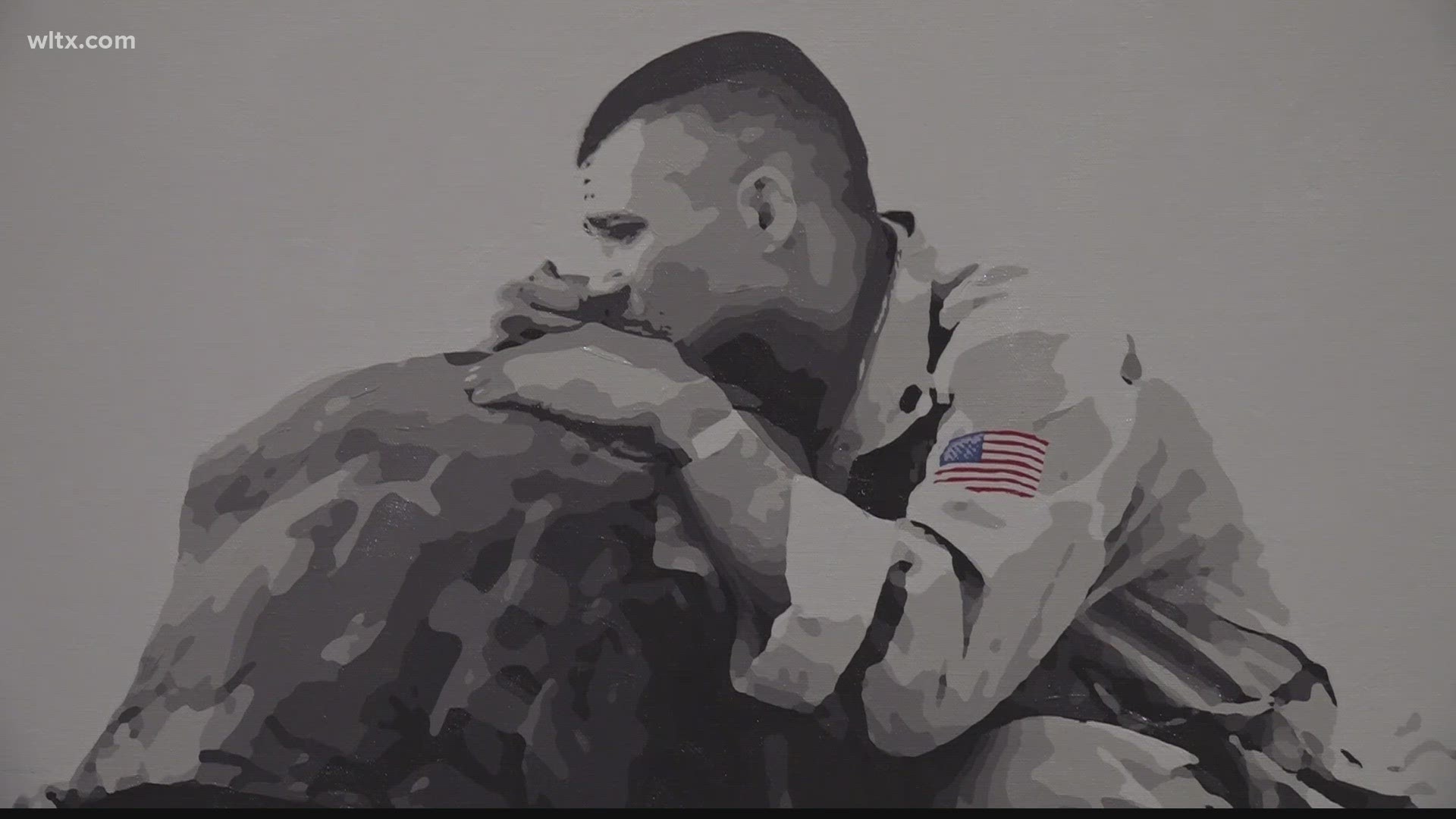COLUMBIA, S.C. — Helping veterans heal through art is the goal of a nonprofit with an exhibit at the Columbia Museum of Art. Bullets and Bandaids helps veterans express themselves and unite with their community.
"To celebrate together and mourn together what it is to be human in a time of war," veteran Robert Leheup explains about what he was looking for when he got out of the Marine Corps.
Leheup tells me he was struggling "over and over again, an issue that didn’t just haunt me but it haunted people I had fought beside."
He recognized the shared trauma he had with other veterans, and he says he found healing in expressing what he had been through.
"Once I was given the opportunity to tell my story, it wasn't just that I was able to tell it, but that I knew it was heard and within that, it was a profound amount of healing," Leheup shares.
It's why he started Bullets and Bandaids. The nonprofit connects veterans with writers and artists. The veterans share their stories in an interview with a civilian, and then a civilian artist transforms that story into a piece of art.
"Isolation is one of the things that has prevented the dialogue that is necessary for our country to not simply heal but to thrive," Leheup explains. "And what we are doing is addressing so many of these different issues that veterans have in a way that gives them agency to start this dialogue with their friends, with their families, with their communities."
"Emotionally, it’s what we need," Victor Johnson, the museum's communications assistant, explains about the exhibit on display. "It has amazing power. You just look at the art here, you go through every piece, and every piece has a talking point, every piece has a starter point of just openness."
That openness is helping veterans share their experiences with their community in a way that might not be possible with words.
"We have people from Afghanistan, Ukraine, Russia, the Netherlands, UK, Liberia, Israel," Leheup lists. "Our veterans are a reflection of a melting pot of a country."
"You look at it and you question what was on the creator’s mind, what was the base of the story. It’s powerful," Johnson shares. "I’ve seen people in here with tears. It’s emotionally, it’s what we need."
This exhibit is open until September at the Columbia Museum of Art. Then, Leheup says it will move to the Harbison Theater before going to Sarasota, Florida.

